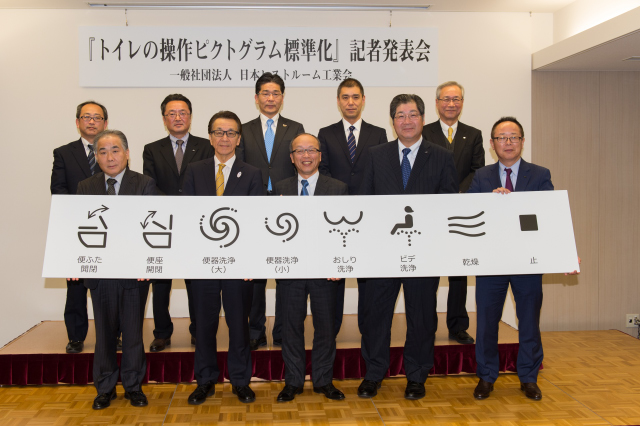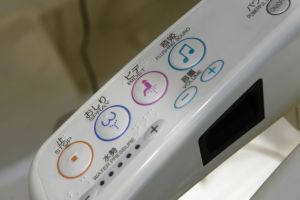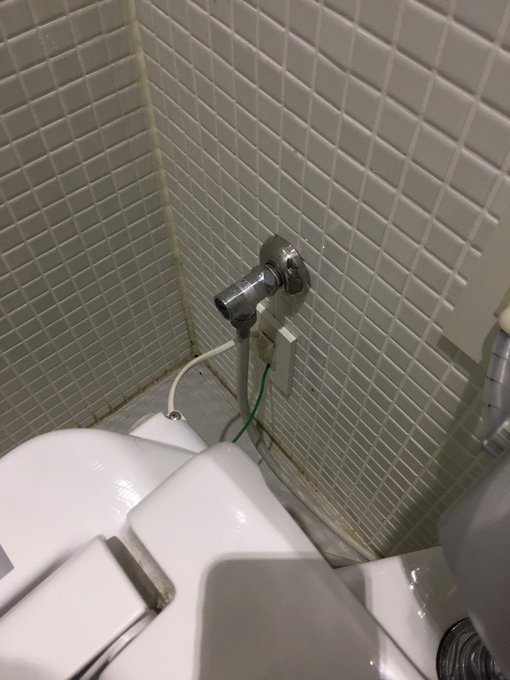W. Edwards Deming的 Out of the crisis 一書,有專章討論"可運作定義"與標準化的優點。
"The symbols are shown in the main image, and from left to right indicate the following: raise the lid, raise the seat, large flush, small flush, rear and front bidet, dry, and stop."
Futuristic Japanese toilets should get easier to use.

Japanese toilet industry agrees to standardize complex bidet controls
The Japan Sanitary Equipment Industry Association, a consortium of…
THEVERGE.COM|由 SAM BYFORD 上傳
http://arstechnica.com/the-multiverse/2017/01/japanese-toilet-washlet-symbols/
THEY'RE STILL PRETTY CONFUSING —
High-tech toilets in Japan getting standardized icons
Perplexing signage will be slightly less perplexing in a bid to help tourists out.
TOM MENDELSOHN (UK) - 1/18/2017, 10:24 PM

It's long been a conundrum for visitors to Japan: how do you actually use the toilet? For more than 35 years, the "washlet"—also known in some parts as the "super toilet"—has baffled the unwary traveller with its incredibly confusing array of additional functions.
FURTHER READINGJapan just tried to launch the world’s smallest orbital rocketEach of these space-age super toilets comes with a panel of buttons festooned with inscrutable icons. Press the wrong one and you can easily end up with a sharp jet of cold water at an uncomfortable angle, or even an unexpected blow-dry for your junk. What makes the whole affair exponentially more confusing is the fact that, until now, the makers of these Swiss army-knife commodes couldn't agree on a way to standardise the images they put on the buttons.
FURTHER READINGJapan’s PM emerges from green pipe dressed as Mario, accepts Olympic torchAhead of the forthcoming Tokyo Olympics in 2020, however, with a massive influx of tourists and their bowel movements expected in the country, the manufacturers have reached a consensus. At a press conference on Tuesday, representatives from the nine companies that make up Japan's Sanitary Equipment Industry Association unveiled eight new symbols to accompany the various key functions for each new loo. Models released from April this year will all be standardised, and the manufacturers hope it might even become an international standard.
The symbols are shown in the main image, and from left to right indicate the following: raise the lid, raise the seat, large flush, small flush, rear and front bidet, dry, and stop.

Enlarge / An example of one of the better-labelled Japanese washlets.
Getty Images
Incredibly, these functions aren't the only features one might find on a super toilet; as well as hot-air drying, heated seats, and a range of bidet spray functions, manufacturers have included functions to control the heating and air conditioning for the room, underlighting for users in the night, and even music to relax a user's sphincter—some Inax toilets will apparently play the first few phrases of Op. 62 Nr. 6 Frühlingslied by Felix Mendelssohn. Higher-end units will have bidet sprays that pulse or vibrate gently for sufferers of haemorrhoids, or thoughtful automatic air deodorising.
"This is one of the most exciting technological breakthroughs to be squeezed out by Japan in recent memory," said Sebastian Anthony, editor of Ars Technica UK. "I was in Japan recently and had a full-on Mr Bean moment with one toilet that featured particularly bad iconography. There was a full and whiffy bowl, manic button pushing as I tried and failed to find the flush button, and hence nozzles spraying parts of me that hadn't received such, er, direct attention in many years."
View image on Twitter

Follow
 Sebastian Anthony
Sebastian Anthony✔@mrseb
This Japanese toilet appears to be connected to the Internet. For firmware updates I guess.
7:35 AM - 20 Nov 2016
Japan is gearing up to make itself more comprehensible to tourists ahead of the Games in 2020, and the Rugby World Cup in 2019. Last year, the government began encouraging Buddhist temples to remove the "manji" symbol from maps aimed at foreigners, due to its close resemblance to the Nazi swastika. A total of six symbols were revised on new tourist maps, including an H in a circle which made westerners think more of helipads than the hotels it was designed to represent.
FURTHER READINGJapan’s high-res photos of the Moon are the coolest thing you’ll see today“Japan needs to create an environment where foreign visitors can easily use transport and find accommodation,” the country's Geospatial Information Authority said in a report quoted by the Japan Times. “For that purpose, it is especially important to disseminate multilingual maps that are easy for foreigners to understand.”
This post originated on Ars Technica UK
The Best Bidet Toilet Seat or Washlet
People have strong opinions about washing their butts, but one thing is for sure: The Toto Washlet C5 is better than any other bidet seat at dialing in your exact preferences—pulsating or oscillating stream, warm or cool water, high or low pressure.
Thanks to the C5’s unique, intuitive controls, you’ll find that it’s just as easy to disable the bells and whistles (if you’re in it only for the heated seat).
And if you’re new to bidets, don’t assume you need to dive in with a feature-rich model like the Toto. We’ve found that many people are perfectly happy with a simpler, less-expensive cold-water model, and we have recommendations for those, too.
我們目前正在測試四個新的坐浴盆和與坐浴盆相鄰的 Saintly Heavenly Butt Kit。
2025 年 1 月
人們對洗屁股有不同的看法,但有一件事是肯定的:Toto Washlet C5 比任何其他坐浴盆座椅都更能滿足您的確切喜好 - 脈動或振盪水流、溫水或冷水、高壓或低壓。
由於 C5 獨特、直覺的控制裝置,您會發現關閉所有花哨的功能同樣容易(如果您只是為了加熱座椅)。
如果您是第一次使用坐浴盆,請不要以為您需要使用像 Toto 這樣功能豐富的型號。我們發現許多人對更簡單、更便宜的冷水模型非常滿意,我們也對此提出了建議。
沒有留言:
張貼留言